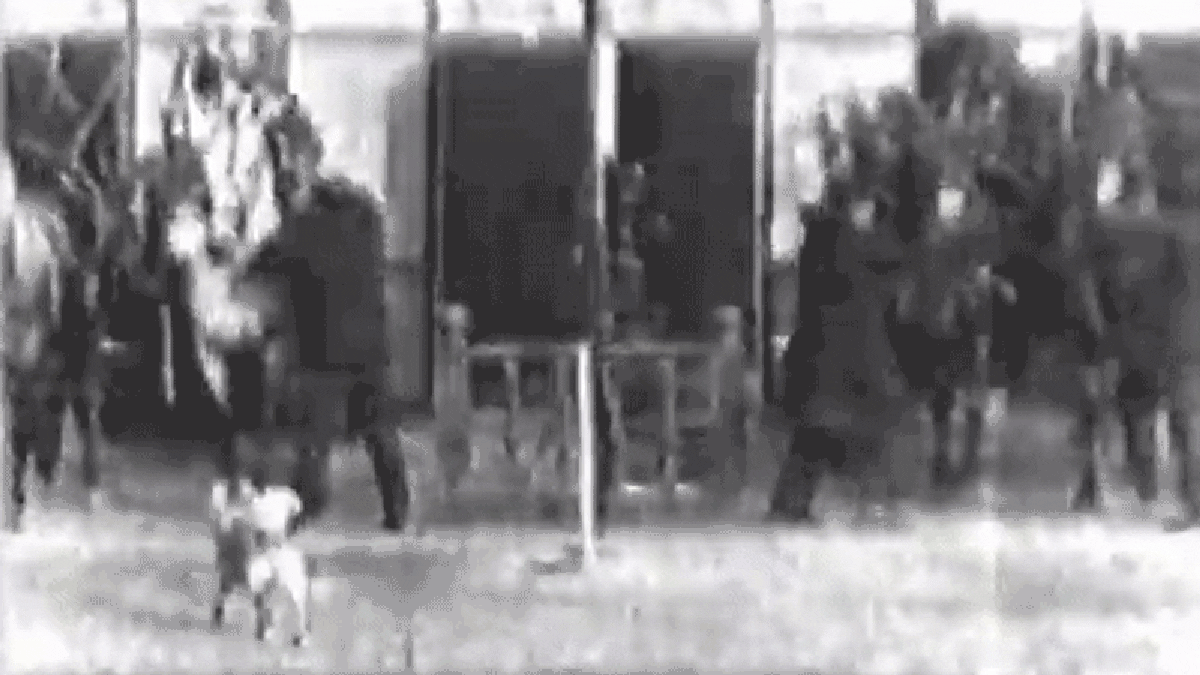The Fire Pole Was Invented by Chicago’s First Black Firefighters

Gif: Aurora Regional Fire Museum
You know what’s a cool loosely car-related job? Being a firefighter. It’s easily the best first-responder job, thanks in part to the rad as heck fire trucks you get to ride around in. It’s also pretty great because a large part of your job involves sliding down a pole.
The fire pole is synonymous with the job of being a firefighter. But, do you know the origins of this quick-exit device?
It turns out the pole used by firefighters to get to their trucks more quickly has a pretty interesting backstory, recently unearthed by the excellent 99 Percent Invisible podcast, which I implore you all to go and subscribe to right now.
This old fire engine had just two horsepower. Photo: General Photographic Agency (Getty Images)
In a recent episode, the podcast took a deeper dive into the history of the fire pole, and found out that it was actually introduced by Chicago’s first Black fire company.
The company in question was Chicago Fire Department’s Engine 21, which first organized in 1872. Back then, fire fighters used horse-drawn carriages, stored on the bottom floor of the fire house. Meanwhile, the crews would live two or three stories up.
When an emergency occurred, crews were historically forced to squeeze down narrow spiral staircases to reach their horse-drawn fire trucks, the podcast reports. According to 99PI:
“One day, a Chicago firefighter grabbed a pole used to load hay into the loft, and slid down that way instead, beating his colleagues to the horses.”
Because of the firefighter’s quick descent, the company soon installed a permanent pole used by everyone at the station. It meant that crews could quickly board their trucks and head out to fight fires much more quickly.
Photo: Public Domain
But this was the 1800s in America, so the advantages of the pole wasn’t just about saving lives. At that time, American firefighters were privateers — competing engine companies would race to the scene of an emergency, and only the first to arrive would get paid for their services.
That meant, if five crews showed up to a fire, four would go home empty handed.
Quicker than taking the stairs. Photo: Orlando /Three Lions (Getty Images)
So for Engine 21, this new speedy boarding system meant the crew could get on the scene, and get paid, quicker than competing crews in the city of Chicago.
There should be no surprise, then, that the fire pole caught on quickly with firehouses in Chicago and beyond.
But while fire poles were once widespread across the firefighting industry, 99PI reports this is no longer the case:
“These days, with trucks instead of horses and ever more single-story stations, the need for such poles has diminished. Sometimes, one is still included in a new station design, but generally not so much as a functional object but rather a long-standing symbol of the profession.”
So, there you have it. Fire poles, once a great way for firefighters to make more money, now remain as a symbol of the vocation’s past.



